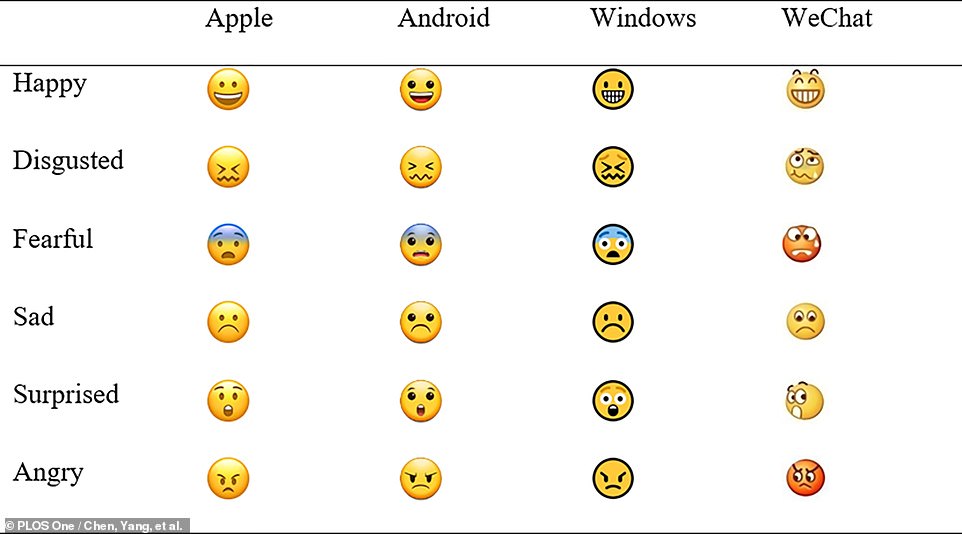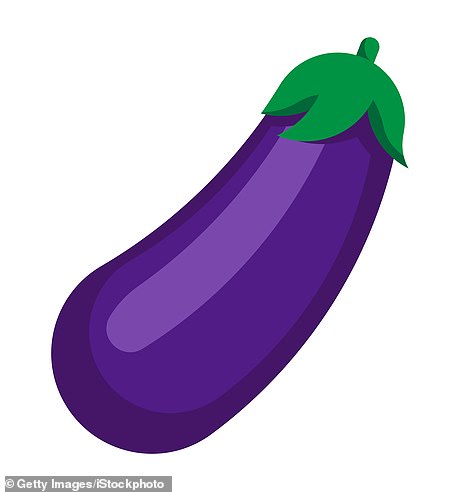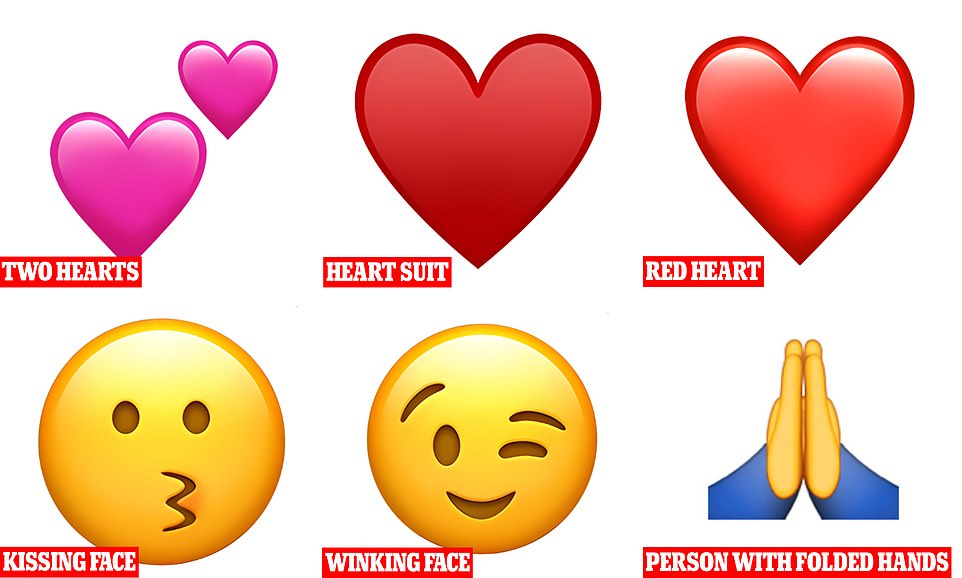Be careful with your emojis! Research shows that old people use emoticons incorrectly – and the meaning can vary WILDLY from country to country
Older people are more likely to use emojis incorrectly and their meanings can vary greatly from country to country, a new study has found.
Scientists from the University of Nottingham found that older texters were less successful than younger people at matching emojis with the emotion they are supposed to represent.
This could mean that older people are more likely to send an inappropriate emoticon, such as a smiley face or an angry face, at the wrong time.
Woe to the grandchildren whose grandparents decide to make an eggplant casserole or a peach cobbler. And when your great aunt sends you a sweaty, red-faced, tongue-out emoji, hopefully she just means that the air conditioning needs to be on.
Researchers asked 500 men and women from Britain and China to identify the emotions depicted in a series of small yellow icons popular in text messages and social media posts.
They also found that British people had more difficulty recognizing the “disgusting” face, possibly because the notoriously reserved Brits are less likely to express that emotion and keep their disgust closer to the vest.
Researchers asked 500 men and women from Britain and China to identify the emotions displayed in a series of emojis, those little yellow icons popular in text messages. Women displaced men because they were more attentive in reading the meaning of the icons

Study participants looked at emojis representing happiness, disgust, fear, sadness, surprise and anger – across multiple tech operating systems that vary in emoji design (above)


Woe to the grandchildren whose grandparents decide to make eggplant casserole or peach cobbler
Participants in the study looked at emojis representing happiness, disgust, fear, sadness, surprise and anger.
Overall, the Westerners did better than the Chinese at recognizing emoji emotions, but struggled with the “disgusting” face, which has downward-facing facial features with a wobbly mouth, furrowed eyebrows and squinted eyes. The researchers said this may be due to “specific emotional experiences across cultures.”
They also noted that in China the “smile” face was often used to represent emotions other than happiness. The research was published in the scientific journal Plos One.
Dr. Hannah Howman, lead author of the study, said: ‘Our findings across age and culture highlight the importance of context in emoji use, for example the possibility that participants in China often use the ‘smile’ emoji for different purposes. then to indicate happiness, which means that some ‘universal’ facial emotions may not be ‘universal’ when transferred to emoji.
‘The current results have important implications when considering emoji use in online communication, for example with interlocutors from different cultures or of different ages.’
Britain is one of the most emoji-hungry countries in the world, with half of us sending at least one every day. They are also popular across all age groups, with little variation between generations.
The researchers found that English posts on X, formerly Twitter, were also littered with emojis – more so than on Chinese social media platform Weibo.
The study also found that men have difficulty understanding the meaning of emoji faces because they are less sensitive than women.
Women fared better across the board. The researchers said this may be because women are more sensitively attuned to recognizing the emotions of human babies.
Yihua Chen, from the University of Nottingham, said: ‘Women show greater accuracy in recognizing emotions than men. One possible explanation is the ‘primary caregiver hypothesis’.
‘Accurate and rapid identification of emotions in children, especially facial expressions, is a very important part of pediatric care, as infant mortality has generally been high throughout human evolution.’
The new emoji coming to your iPhone later this year were unveiled last month. Among them are a lime, a phoenix, a brown mushroom, a broken metal chain, two shaking heads and four sex neural families.
There are also more than 100 side-facing people of varying skin colors and genders, including some with canes and others in wheelchairs.
In November last year, a boy claimed that changes were urgently needed to one of the most popular emoji: the ‘nerd’.

Experts at musicMagpie have revealed Britain’s top 10 emoji icks
Teddy Cottle, 10, from Oxfordshire, has launched a petition calling on Apple to change the ‘offensive and insulting’ character.
He claimed that the prominent front teeth give the wrong impression of glasses wearers and suggests that a smile would be more appropriate.
“It makes me feel sad and upset, and if I find it offensive, thousands of people around the world will find it offensive too,” he said.
And last year, experts at musicMagpie revealed Britain’s top 10 emoji ‘icks’.
Their findings suggest that several popular icons make us cringe – with the ‘two hearts’ emoji topping the list as the most annoying.
Liam Howley, Chief Marketing Officer at musicMagpie said: ‘With so much of our communication being conducted through technological devices these days, it’s no wonder that the ick has transcended the physical world and entered the digital world.’
Emojis are a standard feature on smartphones and computers. The cartoonish faces expressing different emotions date back to the 1990s and have since become a cultural concept.
In 2015, Oxford Dictionaries even named the ‘crying with laughter’ emoji ‘word of the year’. Casper Grathwohl, vice president of Oxford University Press, said at the time: “Traditional alphabet scripts struggle to meet the fast-paced, visually focused demands of 21st century communications.”
‘It is not surprising that a pictographic script such as emoji has stepped in to fill these gaps; it is flexible, direct and produces a beautiful tone.’
“As a result,” Grathwohl concluded, “emojis are becoming an increasingly rich form of communication, one that transcends language boundaries.”
